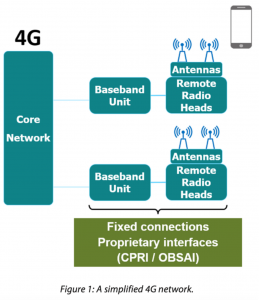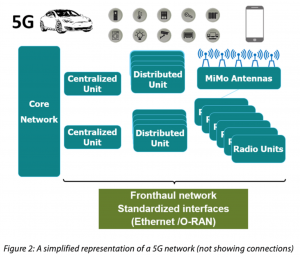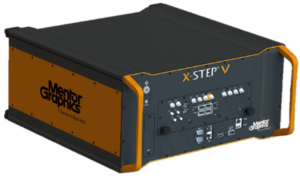Lately, I’ve been cataloging the number of impossible-to-verify technologies we face. All forms of machine learning and inference applications fall into this category. I’ve yet to see a regression test to prove a chip for an autonomous driving system will do the right thing in all cases. Training data bias is another interesting one to quantify. The list can get quite daunting.
 Mentor recently published a new white paper on the challenges of verifying 5G SoCs. It turns out this is another one of those impossible-to-verify technologies. The good news is Mentor outlines a method in their white paper on how to make this one possible. Let’s start with some background on 5G networks – why are they so hard to verify?
Mentor recently published a new white paper on the challenges of verifying 5G SoCs. It turns out this is another one of those impossible-to-verify technologies. The good news is Mentor outlines a method in their white paper on how to make this one possible. Let’s start with some background on 5G networks – why are they so hard to verify?
This is the first topic of the Mentor white paper. When 4G was developed, the systems were defined by essentially three major vendors. The standards weren’t open and connections were established with fixed cabling. So, cellular operators sourced equipment from these major vendors and 4G became a reality. Figure 1, from the white paper illustrates what this looked like.
With the rise of applications such as connected vehicles (think cars, planes, trains, construction equipment farm tractors and so forth) and all the other connected devices that comprise IoT, the data volume for cellular networks has exploded. That spawned the need for 5G and as everyone knows, 5G networks are being brought up by many carriers in all parts of the world right now. There is an important “twist” in the way the network is being implemented, however.
 This time, the cellular operators took control and defined open standards, allowing many new companies to build the hardware and software required for 5G networks. 5G technology is also quite a bit more challenging to implement than 4G. For example, signal transmission requires an array of up to 64 X 64 multiple-input/multiple-output (MiMo) antennas that can support the beamforming required for 5G signals.
This time, the cellular operators took control and defined open standards, allowing many new companies to build the hardware and software required for 5G networks. 5G technology is also quite a bit more challenging to implement than 4G. For example, signal transmission requires an array of up to 64 X 64 multiple-input/multiple-output (MiMo) antennas that can support the beamforming required for 5G signals.
Landscape and population density variations (think cities vs. rural areas) will also need customization to work correctly, creating many hardware/software configurations. To help alleviate this issue, an alliance of telecom industry companies created the Open Radio Access Network (O-RAN) standard. Figure 2, from the white paper illustrates what this new environment looks like.
So, with 5G we have many new vendors (both hardware and software), a variety of use cases and configurations and evolving 5G standards. A lot of the new products for the 5G market have, at their core, a mission critical SoC. It is the verification of those SoCs, in the challenging environment described that is discussed in the new Mentor white paper.
The white paper focuses on the litany of challenges to develop robust and re-usable tests for these SoCs. The outline of the problem includes solid verification suites that can be run before silicon is available on prototypes of the hardware and after silicon is available on the real system. Due to the size of the 5G ecosystem, these test suites need to be shared to ensure interoperability.
 Pre-silicon verification requires more than a standard RTL flow – emulation is required to run the requisite number of tests at speed. Mentor’s Veloce® Strato™ emulator is well-suited to address this requirement and that is explored in the white paper. Once silicon is available, the focus moves to verification of the chip in the lab and in the field. Here, Mentor offers its X-STEP™ platform. This product is focused on the unique needs of the 5G market and can be used for either data generation or data capture.
Pre-silicon verification requires more than a standard RTL flow – emulation is required to run the requisite number of tests at speed. Mentor’s Veloce® Strato™ emulator is well-suited to address this requirement and that is explored in the white paper. Once silicon is available, the focus moves to verification of the chip in the lab and in the field. Here, Mentor offers its X-STEP™ platform. This product is focused on the unique needs of the 5G market and can be used for either data generation or data capture.
The white paper goes into much more detail on these topics and others as well. If you are engaged in design of 5G SoCs, you will want to learn about Mentor’s 5G SoC design and verification flow for pre- and post-silicon. You can access the white paper here.
Share this post via:







Comments
There are no comments yet.
You must register or log in to view/post comments.